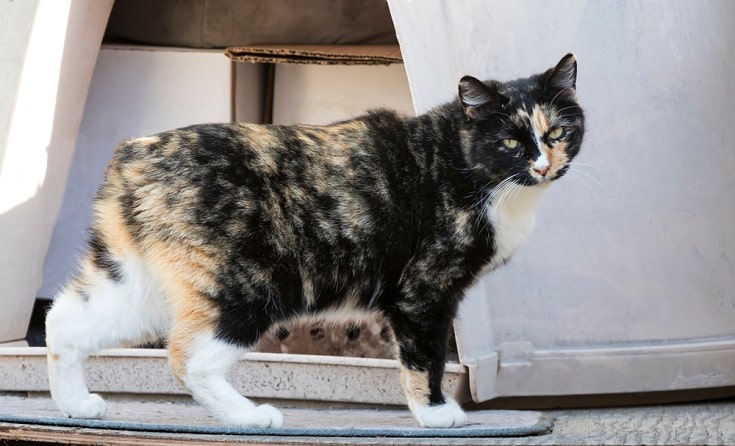Click to Skip Ahead
Manx cats are instantly recognizable thanks to their tailless bottoms. However, even with this one significant similarity, they can be found in a vast range of colors, from solid shades like red to bi-color, smoke, and even chinchilla silver. We’ve rounded up all 42 colors and patterns of the Manx cat.
Manx Cat Colors
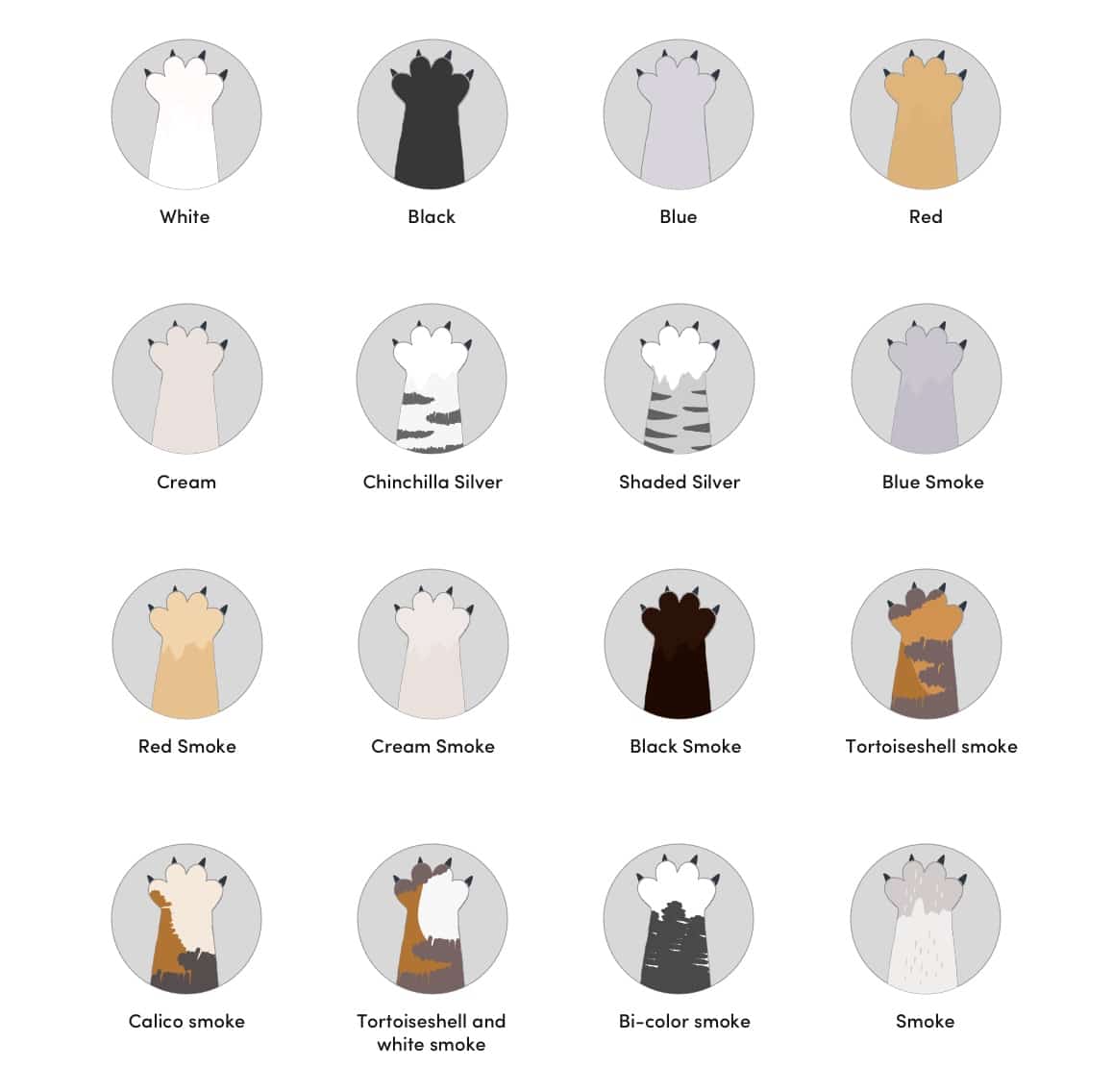
1. White
A white Manx cat will have a pure white coat that glistens in the light. Their nose leather and paw pads should be pink. They can have eyes of deep blue or shades of gold to copper. Some cats have odd-colored eyes; one should be blue and the other any shade of gold to copper. They should both have an equal depth of color.
2. Black
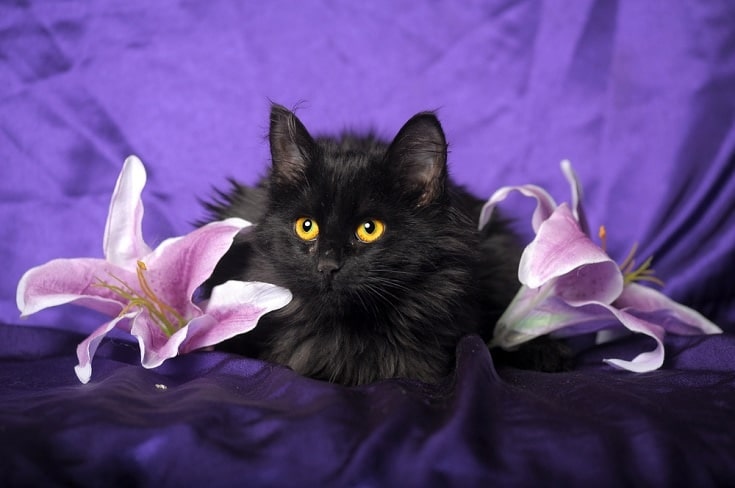
Black Manx cats have a coat in a dense coal black, with the same color from the roots of the hair to the tip. There should be no sign of any rust-colored hair tips. Their nose leather should be black, and their paw pads can be brown or black.
3. Blue
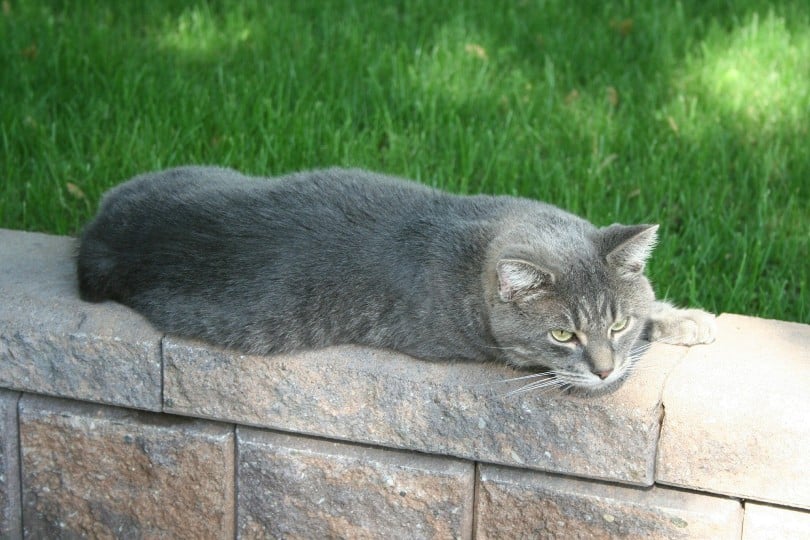
For this color, lighter shades of blue are preferred in the show ring, with one level tone all over the cat’s body. The color should be the same from the root of the hair to the tip. The nose leather and paw pads should both be blue.
4. Red
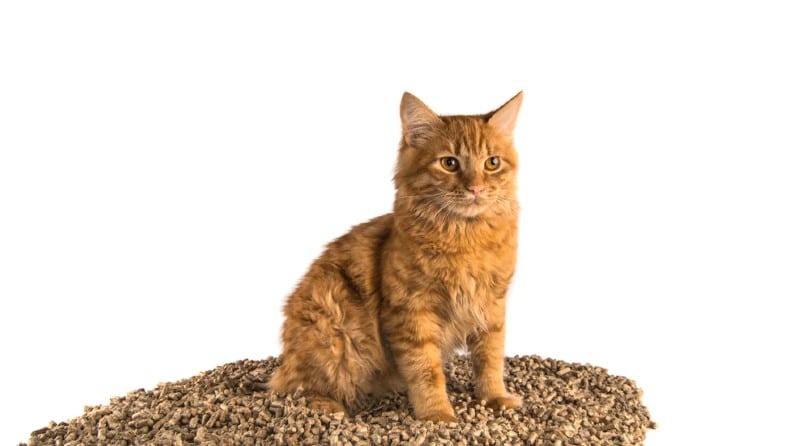
Red Manx cats have coats of rich, clear, and brilliant red. There should be no shading, ticking, or other marks. Their lips and chin should be the same color as the rest of their bodies, with no fading. Their nose leather and paw pads should be a brick red shade.
5. Cream
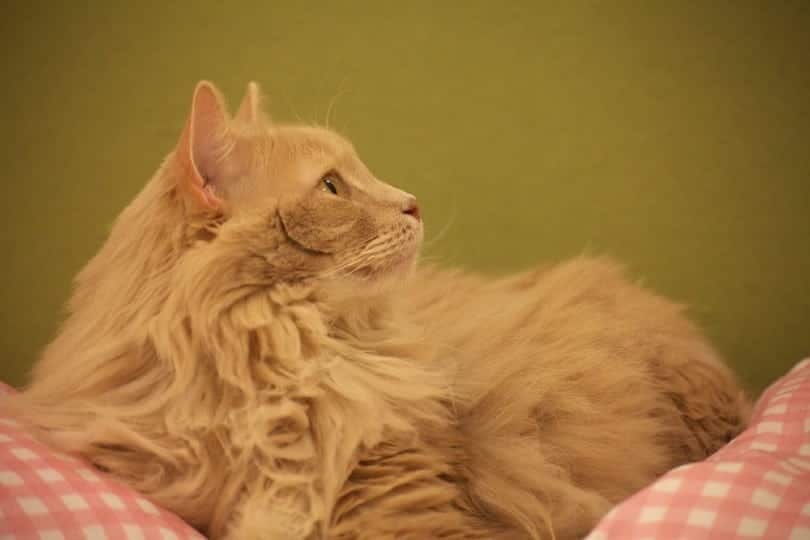
A cream Manx cat has one level shade of buff cream all across their bodies, with no markings. Their color should be the same, from the root of the hair to the tips. Lighter shades are preferred for cats in the show ring. Their paw pads and nose leather are pink.
6. Chinchilla Silver
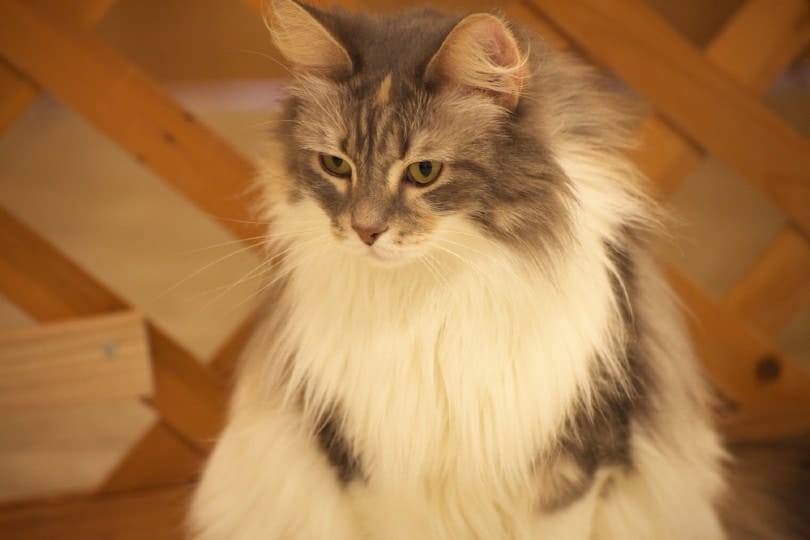
These Manx cats will have a pure white undercoat, with enough black tipping on their head, flanks, and back to give the sparkling silver effect, which is characteristic of the color. Their legs can be lightly shaded with color, but their chest, stomach, and chin should be white. Their nose leather is brick red, and their paw pads are black.
7. Shaded silver
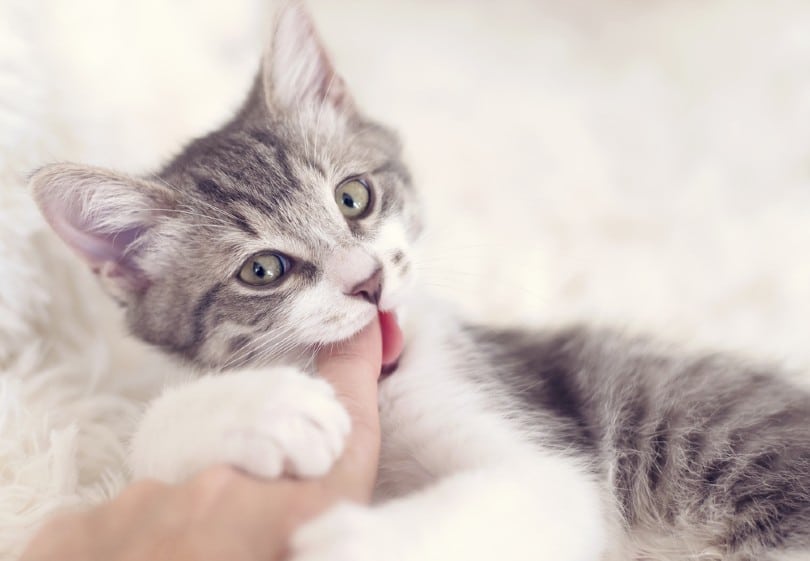
A shaded silver Manx cat has a white undercoat deeply tipped with black on their sides and face, which then fades to white on their chest, stomach, and chin. Their legs should have the same level of shading as their face. Compared to a chinchilla silver cat, they should be much darker. Their paw pads should be black, and their nose should be leather brick red.
8. Blue smoke
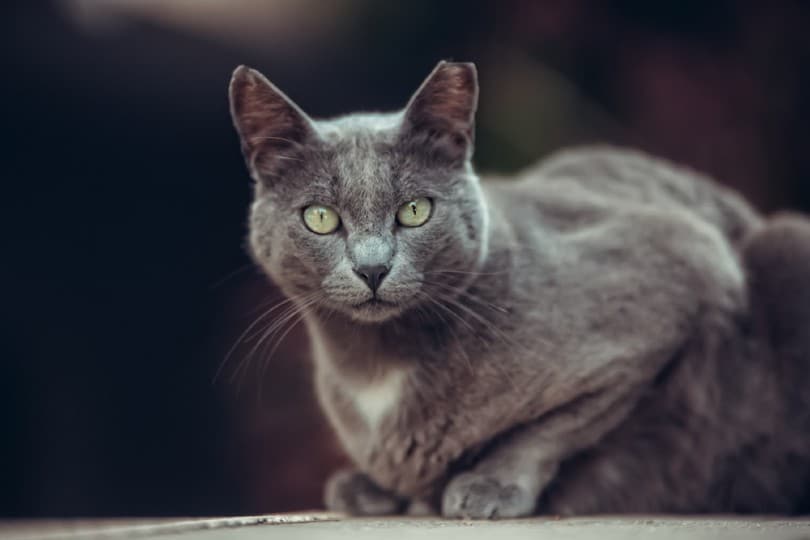
These Manx cats have a white undercoat, which is deeply tipped with blue. Their nose leather and paw pads should be blue.
9. Red smoke
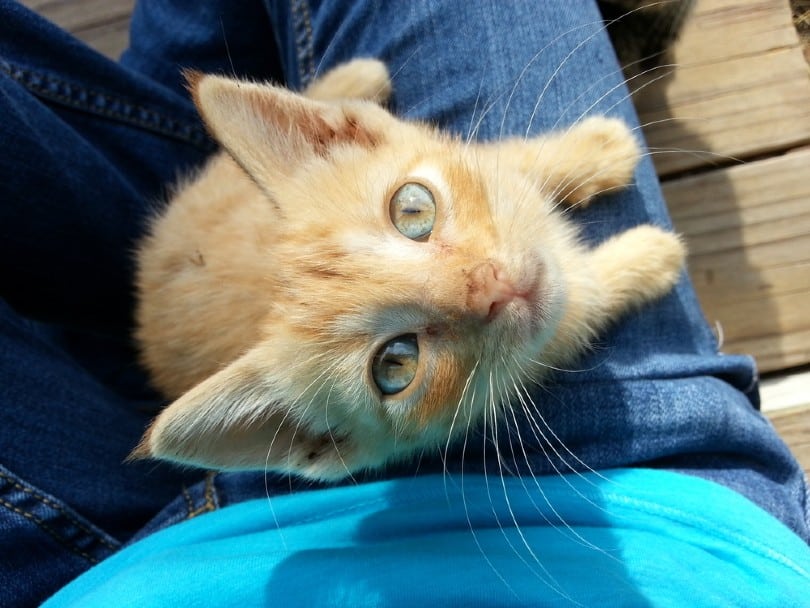
Red smoke Manx cats are sometimes referred to as cameo smoke coloration. They have a white undercoat with deep tips of vibrant red. Their nose leather and paw pads are rose.
10. Cream smoke
A cream smoke Manx cat will sometimes be called a dilute cameo smoke. They have a white undercoat, deeply tipped with cream. Their nose leather and paw pads are pink.
11. Black smoke
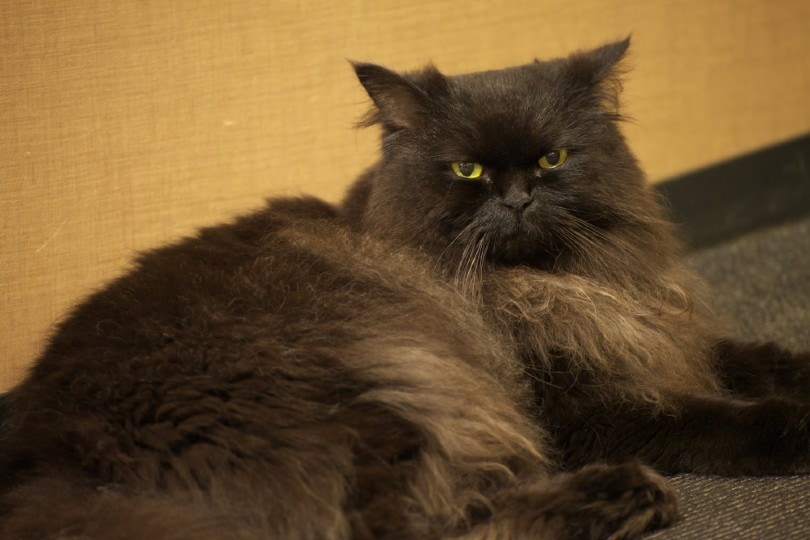
A black smoke Manx cat will have a white undercoat deeply tipped with black. Their paw pads and nose leather are black.
12. Tortoiseshell smoke and dilute tortoiseshell smoke
These cats will have a white undercoat, which, in the case of the tortoiseshell smoke, will be deeply tipped with patches of black, red, and cream for the tortoiseshell smoke. For the dilute tortoiseshell smoke, they have a blue-tipped coat with patches of cream. In either case, their nose leather and paw pads can be pink-mottled.
13. Calico smoke
This includes smoke calico and dilute smoke calico. Cats will have a white undercoat and un-brindled patches of either non-dilute black and red or dilute blue and cream. Their stomach and chests should be white.
Cats can have any pattern, from a tiny amount of colored markings to many colors and very little white. Their nose leather and paw pads may be mottled with pink.
14. Tortoiseshell and white smoke
This category includes smoke tortoiseshell and white and smoke blue-cream and white. They have a white undercoat with either black, blue, red, or cream. Black and red are non-dilute colors, and blue and cream are dilute. Cats should have minimal white markings. Their nose leather and paw pads can be a wide range of colors, but all may be mottled with pink.
15. Bi-color smoke
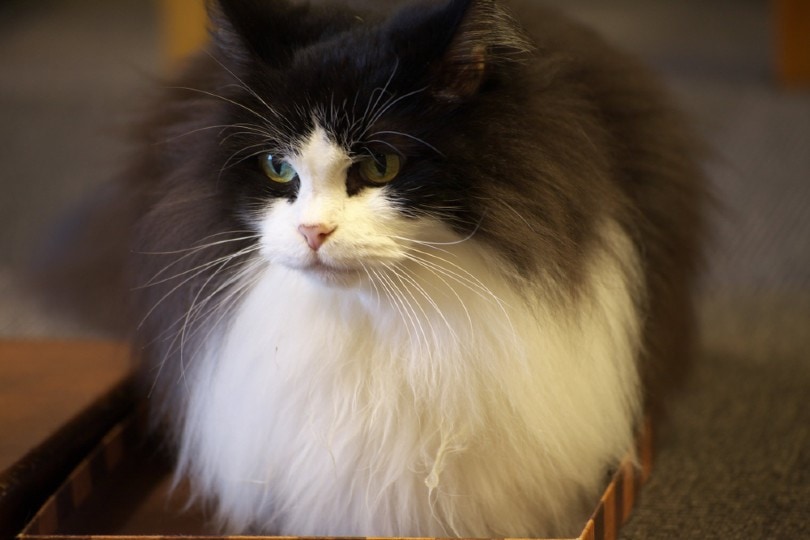
Bi-color smoke Manx cats can be black smoke and white, blue smoke and white, red smoke and white, and cream smoke and white. This classification includes all variants of the white-spotting gene, from van patterns (just the head and tail touched by color with a white body) to low-white patterns.
16. Smoke

A smoke Manx cat will have a white undercoat with deeply colored tips. When resting, the smoke cat looks like they have a solid color, and the undercoat should only be visible when they move. Their extremities should be solid-colored, with only a very narrow band of white at the base of their fur.
Manx Cat Patterns
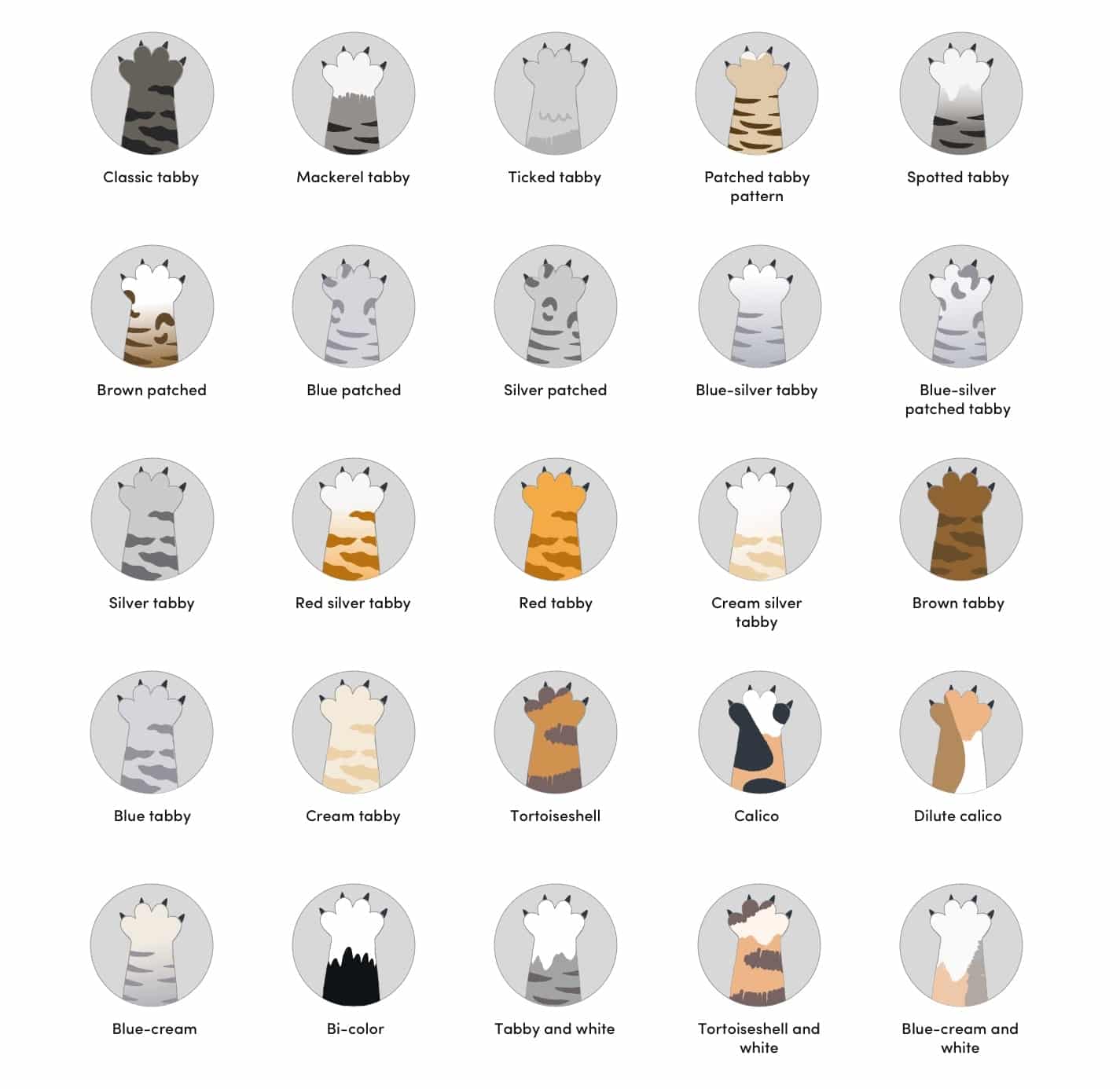
17. Classic tabby pattern
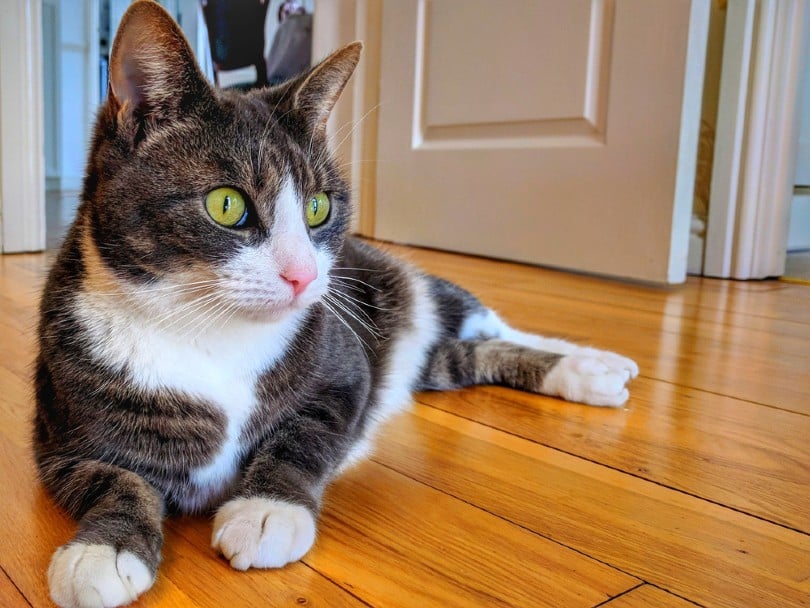
A classic tabby Manx cat will have broad markings of a dense color, clearly defined from their ground color. Their face will have a distinct “M” mark on the forehead, with swirls on their cheeks and a line of color extending away from the outer corner of their eye.
They will have vertical lines traveling down the back of their head, extending into butterfly-shaped markings over their shoulders. On their neck, they should have unbroken necklaces of color. Their legs have even bars of color, extending towards and into their body markings.
Along their back, they will have a vertical line, with a clear stripe of color running parallel to it on each side of their bodies. Their sides should have a large solid marking circled by one or more unbroken rings. Ideally, the markings on both sides should be symmetrical. They usually have double rows of buttons on their chest and stomach.
18. Mackerel tabby pattern
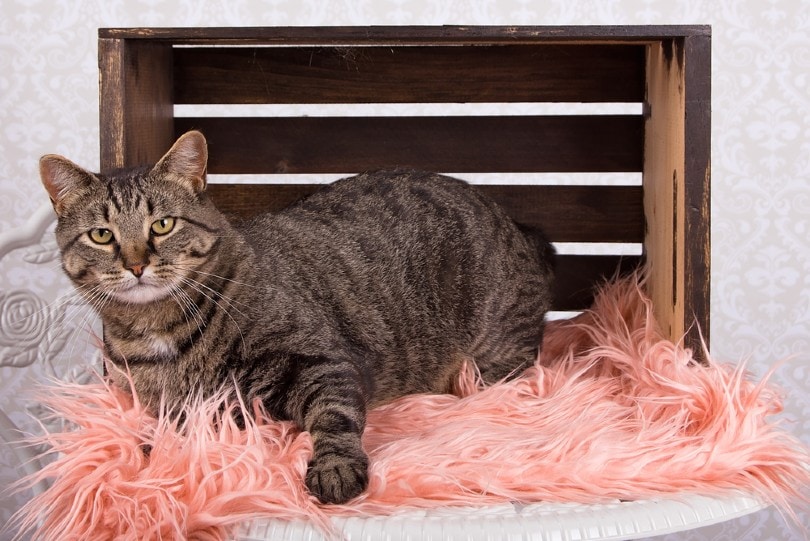
The mackerel tabby pattern has dense, narrow, clearly defined pencil markings. The legs should be evenly barred, with the markings coming up to meet the body markings. They should have distinct necklace markings across their neck and chest. Their heads should be barred, with a distinct “M” marking on the forehead.
There should be unbroken markings running back from their eyes. On their heads, they should have narrow line markings that run back to meet the shoulders, merging into lines on their spines, forming a narrow saddle. Around their bodies, there should be narrow pencil line markings.
19. Ticked tabby pattern
The ticked tabby Manx cat has body hair, which is ticked with stripes of the ground color and marking color. The top of their bodies should appear free from striped, blotched, or spotted markings.
They may have slightly darker shading across the dorsal area. Their undersides are lighter and may show tabby markings. Their faces, legs, and tails should have distinct tabby stripes, and they can have white buttons or lockets.
20. Patched tabby pattern
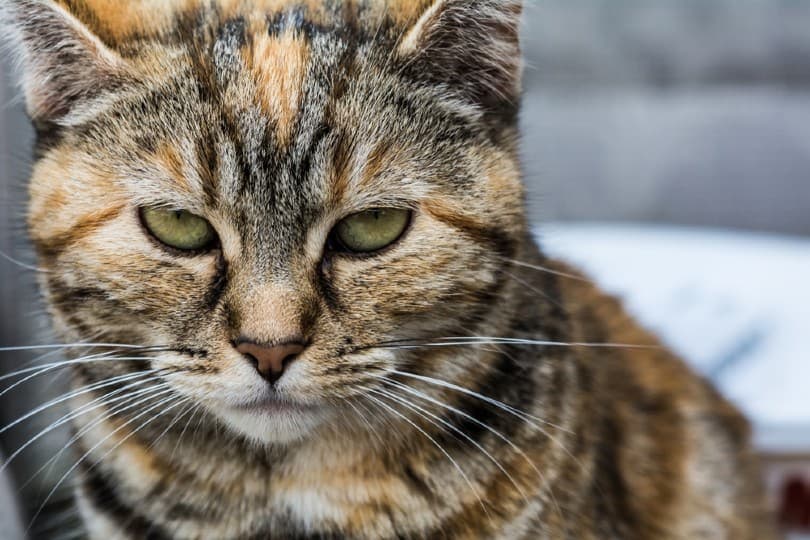
A patched tabby Manx cat is also sometimes called a tortie. They will be an established silver, blue, or brown tabby with patches of red or cream and red.
21. Spotted tabby pattern
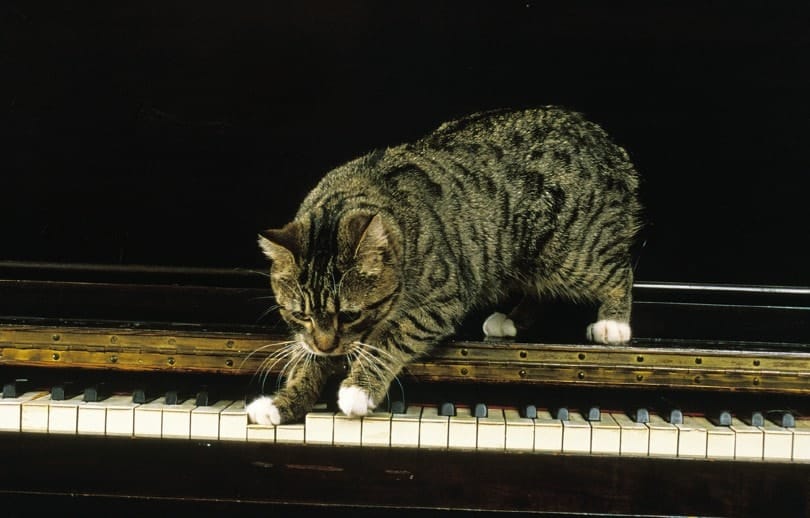
Manx cats with the spotted tabby pattern should have a dorsal stripe, preferably spotted. Their legs should be barred, and their necks should have one or more broken necklaces.
Across their bodies, they should have spotted markings, preferably round and evenly distributed, although other shapes or an odd distribution can also be found. Their faces should have typical tabby markings, and their stomachs should have vest button markings.
22. Brown patched tabby
Brown patched tabby Manx cats have a ground color of a vibrant coppery brown, with deep black markings in any of the three accepted tabby patterns. They will also have patches of red or cream and red. Cats destined for the show ring should have a blaze over the face, in red or cream and red.
23. Blue patched tabby
A blue-patched tabby Manx cat will have a ground color of pale silver-blue. Their tabby markings can be classic, mackerel, or spotted, and will be a deep shade of blue. Their coat should have a warm fawn tone overall. Across this, there will be clearly defined cream patches. For show cats, a cream blaze is preferable.
24. Silver patched tabby
These Manx cats have a pale silver ground color, with any of the three accepted tabby patterns in a dense black. They will also have patches of either red or cream and red across their bodies and extremities. On their face, a red or red and cream blaze is preferred.
25. Blue-silver tabby
A blue-silver tabby Manx cat will have a white undercoat with a ground color in a clear silver blue. Their markings will be a deeper shade of blue and can be mackerel, spotted, or classic. Their paw pads can be old rose or blue, and their nose leather should be blue or old rose trimmed with blue.
26. Blue-silver patched tabby
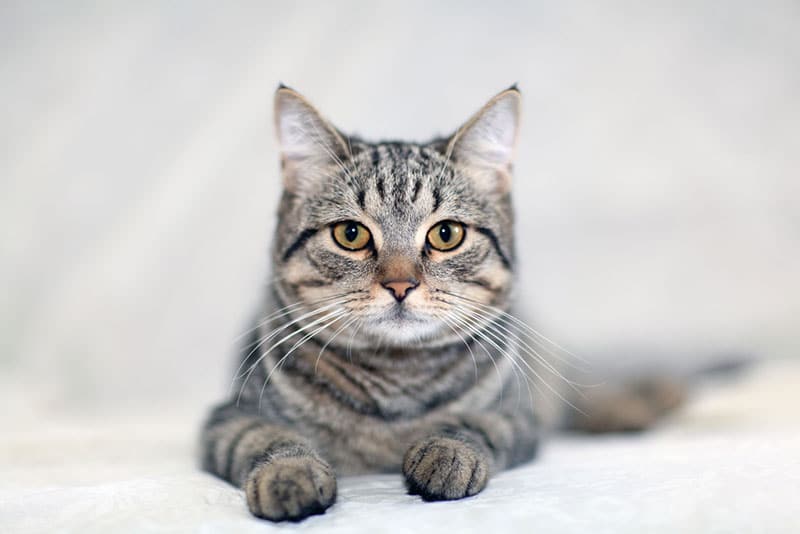
A blue-silver patched tabby Manx cat has a ground color in a pale silvery blue, and their undercoat is white. Their tabby markings should be blue, interspersed with clearly defined patches of cream across both their extremities and torso.
They can have tabby markings in any of the three accepted patterns. For show cats, a cream blaze on the face is preferred. Their nose leather should be blue or old rose trimmed with blue. Their paw pads can be old rose or blue.
27. Silver tabby
These Manx cats will have a pale and clear silver ground color. Their markings can be classic, mackerel, or spotted, and should be a dense coal black. Their nose leather should be brick red and their paw pads black.
28. Red silver tabby
Red silver tabbies are sometimes called cameo tabbies. They have an off-white ground color with a pure white undercoat. Their markings will be red and can be in the classic mackerel or spotted patterns. The preferred color for their paw pads and nose leather is rose.
29. Red tabby
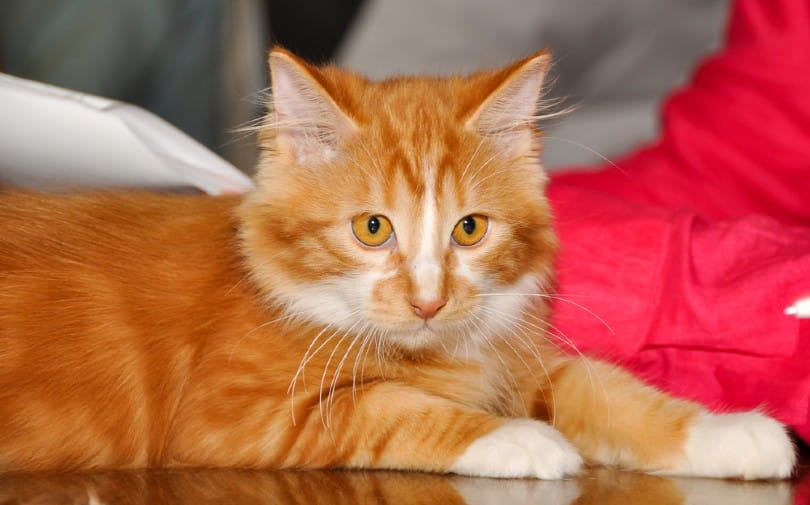
Red tabby Manx cats will have a red ground color with classic, spotted, or mackerel tabby markings in a rich and deep red. Their nose leather and paw pads should be brick red.
30. Cream silver tabby
Cream silver tabbies are sometimes called dilute cameo tabbies. Their ground color is off-white, with a pure white undercoat. Their markings can be the classic, spotted, or mackerel patterns and will be a pale cream. Their nose leather and paw pads will preferably be pink.
31. Brown tabby
Brown tabby Manx cats have a ground color of brilliant brown copper. Their thick black markings can be the classic, spotted, or mackerel pattern. The backs of their legs should be black from the paw to the heel. Their nose leather should be brick red, and their paw pads can be black or brown.
32. Blue tabby
A blue tabby Manx cat has a pale ivory blue ground color with very deep blue markings. They can show the classic, spotted, or mackerel tabby pattern. Their coat should have an overall warm fawn overtone. Their nose leather should be an old rose, and their paw pads rose.
33. Cream tabby
These Manx cats can have the classic mackerel or spotted tabby pattern with a ground color of pale cream. Their markings should still be dilute but be dark enough to contrast against the ground color. Their nose leather and paw pads should be pink.
34. Tortoiseshell
A tortoiseshell Manx cat will have a black brindled coat combined with patches of red, which can be in different shades. They can also exhibit brindling with minimal patches.
35. Calico
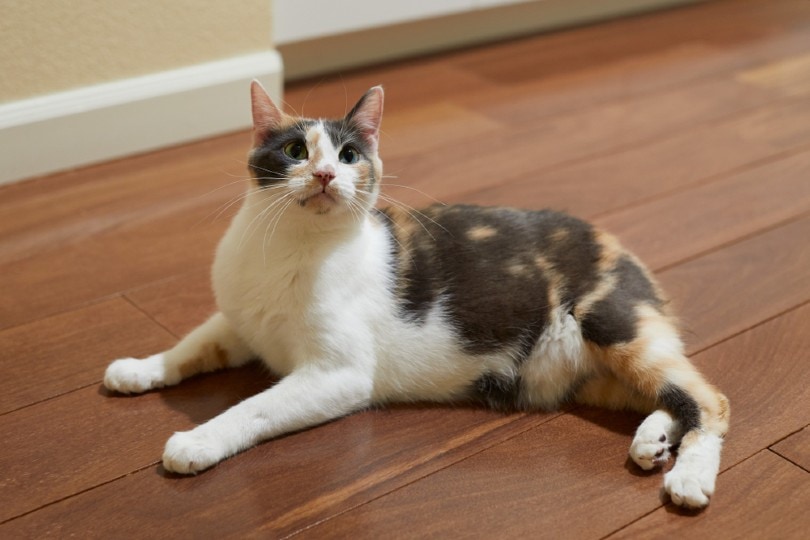
A calico Manx cat has a white coat with patches of black and red. Un-brindled patches of color are preferred, but a small amount of brindling is allowed. Their undersides should be white.
Cats in this class can have any white spotting pattern, including the van pattern with colored patches on the head and tail only.
36. Dilute calico
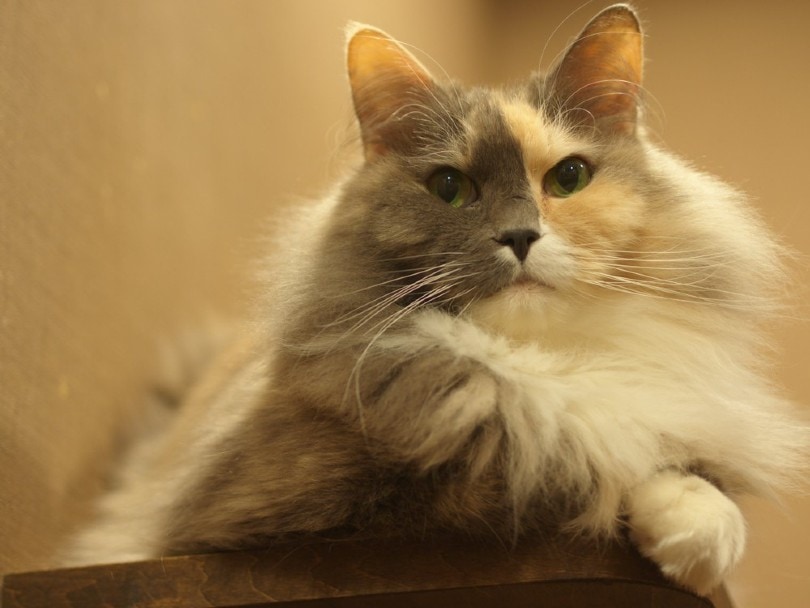
These Manx cats should have a primarily white coat with preferably un-brindled patches of cream and blue. A small amount of brindling is acceptable. Their legs, stomachs, and chests should be white. This category includes all types of the white spotting gene, including the van pattern (with colored patches seen on the head and tail only).
37. Blue-cream
Blue-cream Manx cats have a blue coat with cream brindling. Their coats should have minimal patching.
38. Bi-color
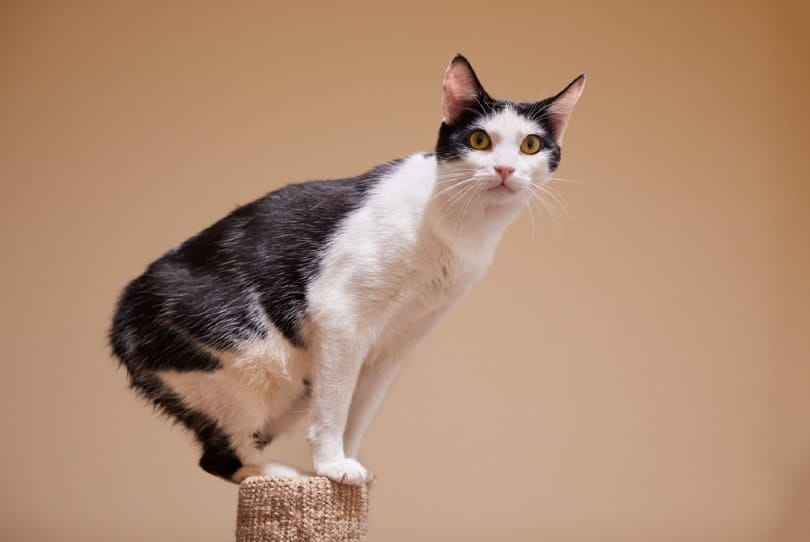
A bi-color Manx cat can have a coat combining white with any of the following colors: blue, black, red, cream, blue smoke, black smoke, red smoke (cameo smoke), and cream smoke (dilute cameo smoke). They can show a range of patterns, from low-white to van (patches on the head and tail only).
39. Tabby and white
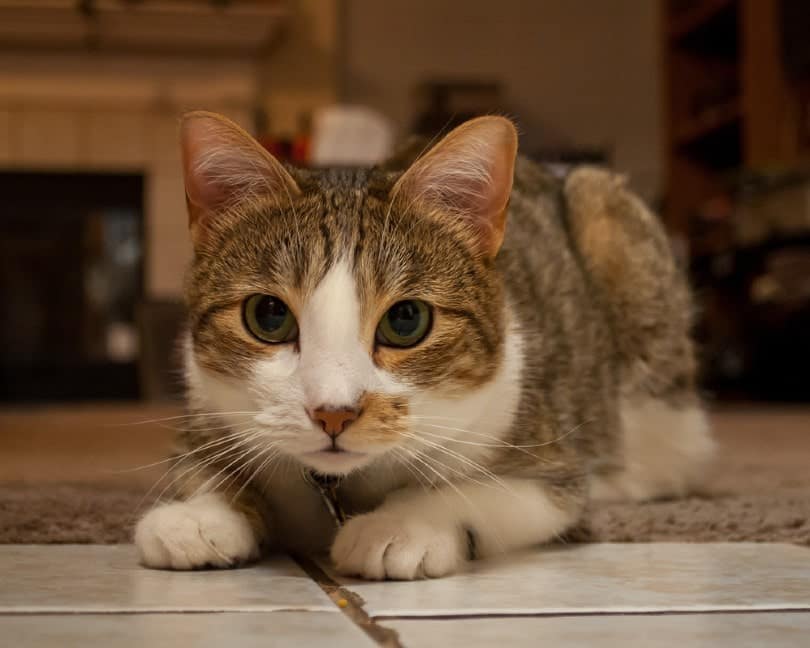
A tabby and white Manx cat can have a tabby pattern from any previously mentioned tabby classes combined with white patches. Their eyes can be odd-colored, blue, or any other color accepted in the tabby categories.
40. Tortoiseshell and white
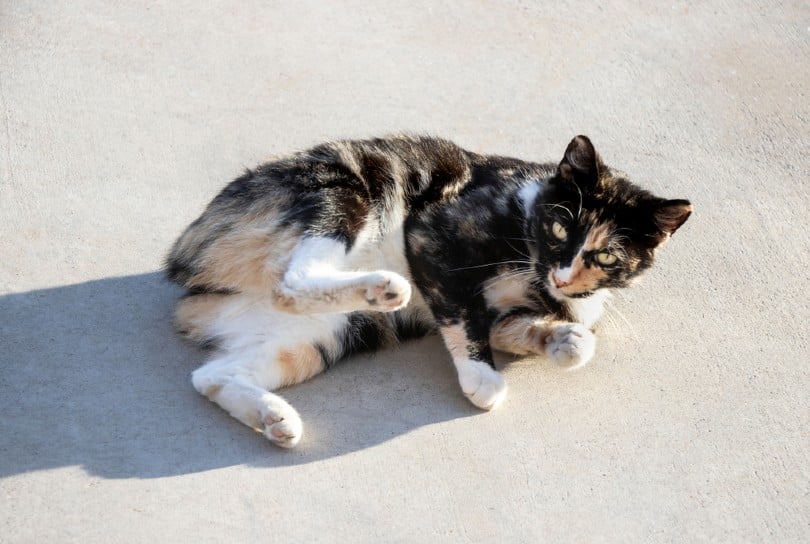
Tortoiseshell and white Manx cats will have patches of black and red with brindling. Their coats should only have a small number of white markings on the belly, feet, face, chest, back, flank, and neck. They can exhibit different shades of red patches.
41. Blue-cream and white
These Manx cats have a blue and cream coat with brindling. There should be minimal white markings, limited to the belly, chest, face, feet, and a tiny spot in the back, flank, or neck.
42. Other Manx Colors
This catch-all category, called OMC in the breed standard, encompasses any other color or pattern that isn’t covered in the categories above! The only exceptions are colors indicating hybridization with another breed. This includes the Himalayan pattern, chocolate, or lavender.
Final Thoughts
Manx cats make incredible pets, and they’re available in several luxurious colors and patterns. Regardless of the color you select, ensure you adopt your Manx from a reputable dealer or well-run shelter. Manx require regular veterinary examinations to ensure the mutation that stunts their tail does not affect their quality of life.
Featured Image Credit by: PradaBrown, Shutterstock

